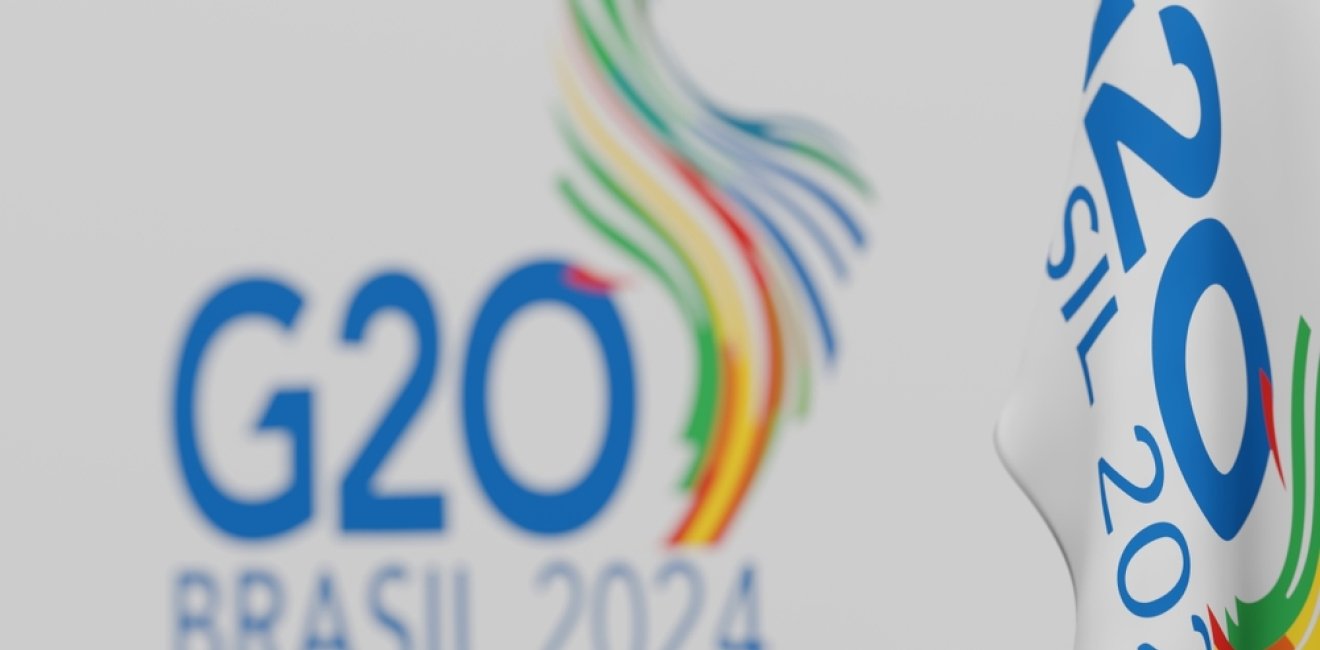Brazil Lays Down Anti-Poverty Agenda to the G20
Brazil presented its policies on poverty and hunger to G20 delegations last week. The Luiz Inácio Lula da Silva administration has proposed launching a Global Alliance Against Hunger and Poverty

A blog of the Brazil Institute
Brazil presented its policies on poverty and hunger to G20 delegations last week. The Luiz Inácio Lula da Silva administration has proposed launching a Global Alliance Against Hunger and Poverty

Brazilian Social Development Minister Wellington Dias said he was encouraged by the results of a G20 meeting about the creation of a Global Alliance Against Hunger and Poverty, one of the linchpins of Brazil’s agenda for its turn presiding the Group of 20, the world’s top economic forum.
“We conclude this step here in Brasília with much more firmness for [mutual] understanding” towards the approval of a so-called “basket” of best practices in the upcoming alliance, Mr. Dias told a press conference.
Brazil presented its policies on poverty and hunger to G20 delegations last week. The Luiz Inácio Lula da Silva administration has proposed launching a Global Alliance Against Hunger and Poverty in November 2024, during the G20 summit of heads of state and government in Rio de Janeiro.
Mr. Dias added that approval of the terms is expected in July during an upcoming ministerial meeting in Rio. “We are leaving Brasília very excited … we really feel the enthusiasm of the [G20] delegations representing the countries and of all the organizations with the objectives of this task force.”
The alliance is a tool for reaching the Sustainable Development Goals (SDGs) adopted by the United Nations in 2015. The first two goals involve eradicating extreme poverty and hunger everywhere by 2030. President Lula’s innovation, Mr. Dias says, is using the G20 presidency as a forum to prioritize this issue and enable developed countries to sponsor poorer countries toward those goals.
The flagship Bolsa Família welfare program is naturally one of Brazil’s leading examples of its “basket” of best practices to be discussed by the delegations. The world-renowned conditional cash transfer program had a record budget of BRL 168 billion (USD 33 billion) in 2023; families enrolled last year received an average of BRL 670 (USD 134) per month.
Data from the United Nations Food and Agriculture Organization (FAO) shows that the prevalence of severe food insecurity in the Brazilian population went from 1.9 percent in the 2014-2016 period to 9.9 percent in the 2020-2022 period.
Between both readings, Brazil faced its worst two-year GDP skid ever recorded, a traumatic presidential impeachment, and a pandemic.
Thanks to the recovery of the job market and the expansion of social programs that followed the pandemic downturn, however, Brazil’s poverty rates dropped in 2022. The decrease corresponds to 10.2 million Brazilians overcoming poverty, roughly equivalent to the entire population of Portugal.
The extreme poverty rate has also dropped, from 9 to 5.9 percent. At the end of 2022, 19.1 million people were living on less than USD 2.15 per day—6.5 million fewer than a year prior.
Mr. Dias also highlighted Brazil’s school meals program, which serves 40 million children and teenagers and buys mostly from family agriculture. Free lunch and other meals in public schools are a staple of Brazil’s policies in education and the fight against hunger.
According to the latest results of the Program for International Student Assessment (PISA) by the Organization for Economic Co-operation and Development, the percentage of 15-year-old Brazilian school students facing major food insecurity is lower than in a host of developed countries, including the US.
Brazil has the world’s second-largest school meals program, behind India. In 2005, the FAO considered the Brazilian scheme a model for combating hunger and malnutrition in developing countries.
Brazil’s school meals program, the PNAE, began in the 1950s as a policy to combat hunger. It was expanded in the 1970s and then enshrined in the 1988 Constitution.
But it was only in the 2000s that the program gained the contours that make it unique: it began to be managed by nutritionists, who evaluate the food served in schools, at least 30 percent of which are products from family farming. It also contains rules that limit the consumption of ultra-processed foods such as soda and potato chips.
Furthermore, serving food in schools helps discourage dropouts, as school meals are typically the only meal of the day for Brazil’s poorest children.
Renato Godinho, a career diplomat, stressed during the press conference that Brazil’s idea is not to create a new fund or mechanism to fight hunger and poverty, since a lot of those already exist. “The alliance is a proposal to better coordinate all the existing funds, the several solutions,” he said.
Under this idea, the alliance would share a “basket” of best practices and enable rich countries to support the existing funds that go towards them.
As part of Brazil’s ongoing yearlong G20 agenda, the next meeting of the hunger and poverty task force will be held in May in the city of Teresina, the capital of the northeastern state of Piauí. Mr. Dias is a native of Piauí and served as governor for four terms.
This text is part of G20 Dialogues, a project of the Brazil Institute at the Woodrow Wilson Center and The Brazilian Report. Through live broadcasts, articles, and events, we will analyze Brazil’s challenges and actions at the helm of the G20.

Like the content? Subscribe to the Brazilian Report using the discount code BRG20 to get 20% off any annual plan.

The Brazil Institute—the only country-specific policy institution focused on Brazil in Washington—aims to deepen understanding of Brazil’s complex landscape and strengthen relations between Brazilian and US institutions across all sectors. Read more
